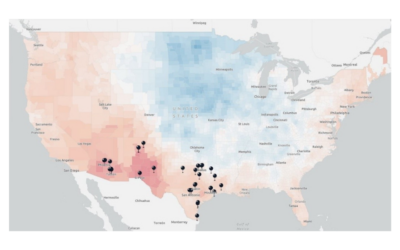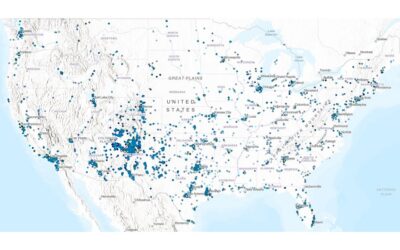Many people outside the industry might not realize the zoo is a uniquely complex organism. While it’s certainly an attraction, it’s also so much more than that. A highly-performing zoo is a community gathering place, a fundraising agency, a retail outlet, a food service operation, an advocacy group, a research facility, a business enterprise, a membership organization, a recreational space, and so much more. Not only are you doing just about everything, but most of you are doing it with extremely limited resources, and often times with multiple governing bodies.
This beautiful mess of operations presents a quandary for us numbers people—our organizations spin off a dizzying amount of data, and the possibilities are both tantalizing and intimidating. With limited resources and a lack of truly bespoke software for our industry, we’re forced to make do with what we’ve got by jury-rigging multiple systems and sucking up as much of that data as possible.
But the truth is that very few of us have it all. Of all the zoos and aquariums we’ve worked with, I would say the number of folks who are fully satisfied with their data systems is roughly zero. So today we’re going to take a shot at prioritizing your data collection efforts, and make a few suggestions about what you can do with what you’ve got.
Tier 1: Publicly Available Resources
If you’ve got a computer, an internet connection, and hands, the door is wide open to a sea of useful data resources. Due to some wonderful advances in accessibility technology, you technically don’t even need hands. A few of my favorites include:
-
American Fact Finder (factfinder.census.gov): A massive compendium of demographic data collected by the U.S. Census Bureau, it’s chock full of information about who lives where, how much money they make, what their background is, a so much more. Most data is available at just about any geographic level you could want, including states, counties, cities, statistical areas, and ZIP codes, just to name a few.
-
Federal Reserve Economic Data aka FRED (fred.stlouisfed.org): This incredibly useful site offers detailed historical and current economic data for just about any geographic area you could ever hope for.
-
NOAA National Centers for Environmental Information (ncdc.noaa.gov): No matter how many resources your pour into marketing or how amazing your new exhibit is, sometimes you just can’t beat the weather. NOAA is a free source of historical weather data for every location in the country at a granular level. If you’re interested in learning about how the weather effects your attendance or drink sales, this is the place to start.
Tier 2: Basic CRM Usage
CRM is technically shorthand for “customer relationship management” systems, but for our purposes we prefer to call them “constituents.” While we’ve yet to encounter the perfect CRM for a zoo or aquarium, there are a whole bunch of them that do the job adequately well. The largest proportion of clients we work with find themselves here in tier 2, and they’re able to capture data including:
-
Attendance: How many of each type of admission are coming through our gates? How many members, how many adults, how many children, how many special event participants?
-
Members and Donors: How many members or donors do we currently have? Where do they live? How long have they been members? When was the last time they made a gift?
-
Food: How much food and beverage was sold on a given day?
Most of our clients are able to answer these questions pretty easily. But by taking that information to the next level, there are ways to extract meaningful information. For example, by cross-referencing the ZIP codes of our members or donors with data from the American Fact Finder and FRED, we can build demographic and economic profiles about who they are and how they spend their money. Or by overlaying beverage sales with weather data, we can determine to what extent a higher temperature has on beer and soda consumption.
Tier 3: Advanced CRM Usage
As I mentioned earlier, a zoo or aquarium is so much more than just a visitor facility, and this is where our greatest opportunity lies. The holy grail of zoo data systems is one that fully integrates multiple operations in such a way that we have a detailed view of the whole operation. At the highest level, we are able to see who exactly is partaking in any of our various offerings. For example, this could include:
-
Food/Retail: The ability to know not just what was sold, but who bought it. And not just if they were a member, but specifically which member. Do members from certain areas or within certain demographic profiles consume specific goods at a different rate?
-
Rides/Experiences: Who is riding our carousel and when are they riding it? Can we maximize ridership by strategically discounting at certain times to maximize capacity? Would we benefit from an additional kids’ train?
This is where we see that our industry faces its greatest challenge, and also its greatest opportunity. In short, we can utilize our data systems to identify where we’re strong and where we’re not, and make strategic decisions about how to maximize our success. To learn more about how Zoo Advisors can help enhance your data strategies and make informed decisions, drop us a line here.





